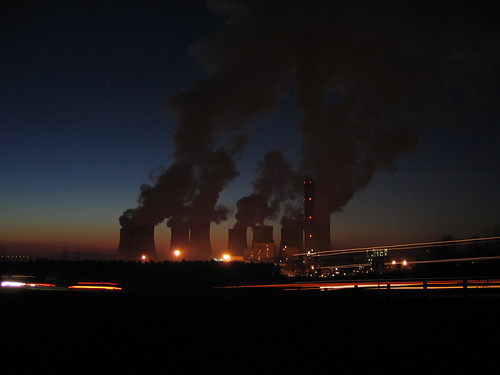 A somewhat belated happy new years to everyone reading – welcome back after the Christmas break. Not only has 2007 been quite a year in the politics of climate change (more on this from me later), there have been quite a few climatic extremes – see the article below from the Associated Press. As skeptics have been all too eager to point out, there have been plenty of examples of cold weather in 2007 (and hence global warming must be false). However, as the article clearly states: “Individual weather extremes can’t be attributed to global warming, scientists always say. However, ‘it’s the run of them and the different locations‘ that have the mark of man-made climate change, said top European climate expert Phil Jones, director of the climate research unit at the University of East Anglia in England.” After all, a single heatwave doesn’t prove global warming to be ‘true’.
A somewhat belated happy new years to everyone reading – welcome back after the Christmas break. Not only has 2007 been quite a year in the politics of climate change (more on this from me later), there have been quite a few climatic extremes – see the article below from the Associated Press. As skeptics have been all too eager to point out, there have been plenty of examples of cold weather in 2007 (and hence global warming must be false). However, as the article clearly states: “Individual weather extremes can’t be attributed to global warming, scientists always say. However, ‘it’s the run of them and the different locations‘ that have the mark of man-made climate change, said top European climate expert Phil Jones, director of the climate research unit at the University of East Anglia in England.” After all, a single heatwave doesn’t prove global warming to be ‘true’.
2007 – A Year of Climate Surprises
Associated Press (1st January 2008)
When the calendar turned to 2007, the heat went on and the weather just got weirder.
January was the warmest first month on record worldwide — 1.53 degrees above normal. It was the first time since record-keeping began in 1880 that the globe’s average temperature has been so far above the norm for any month of the year.
And as 2007 drew to a close, it was also shaping up to be the hottest year on record in the Northern Hemisphere.


 “CSIRO scientist says sign Kyoto”
“CSIRO scientist says sign Kyoto” Two interesting news articles have come out of Harvard this week: firstly an excellent speech by
Two interesting news articles have come out of Harvard this week: firstly an excellent speech by  A new study published in the Proceedings of the
A new study published in the Proceedings of the 
 The Center for Science & Public Policy have released a document entitled
The Center for Science & Public Policy have released a document entitled 

